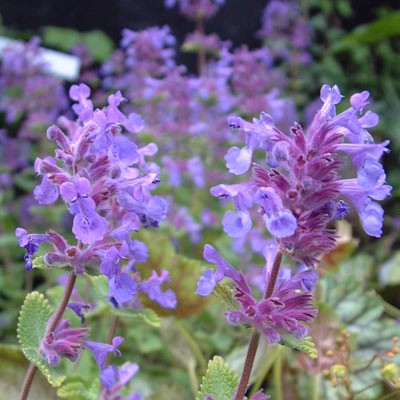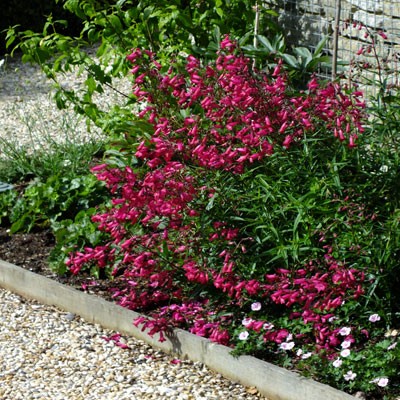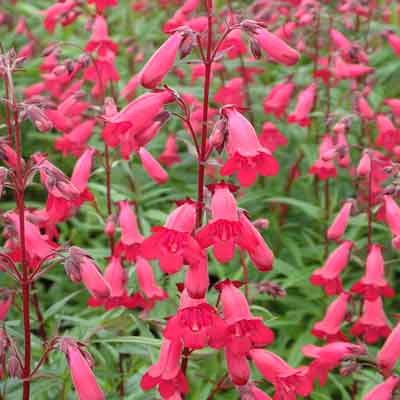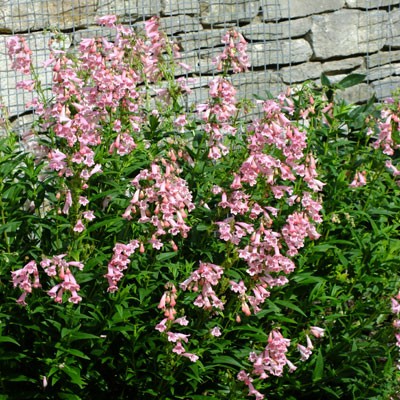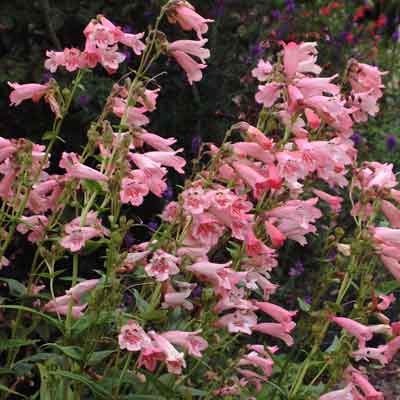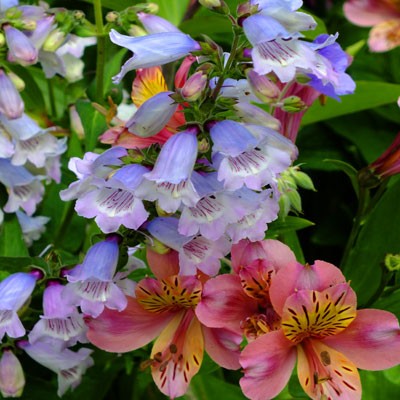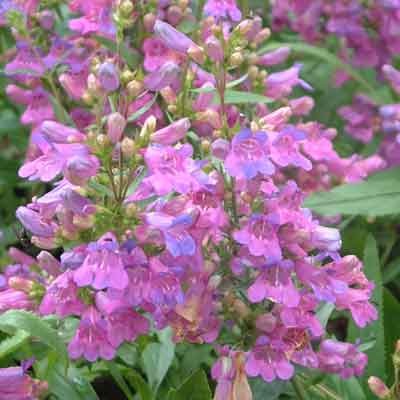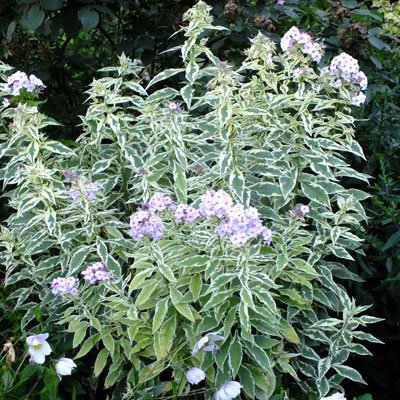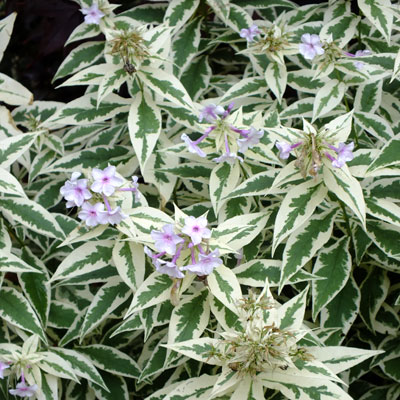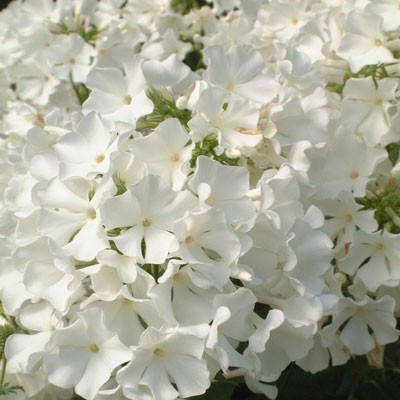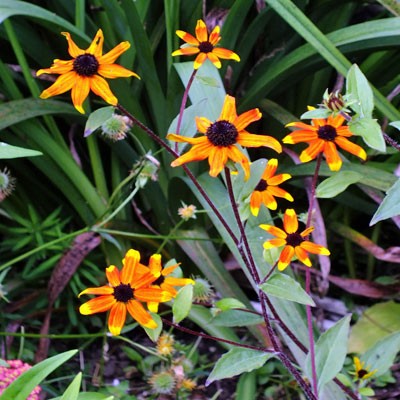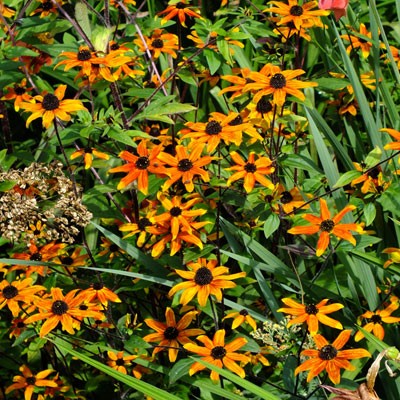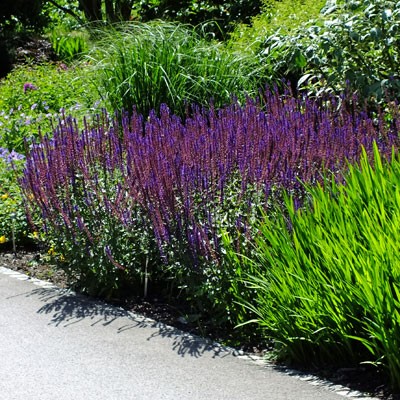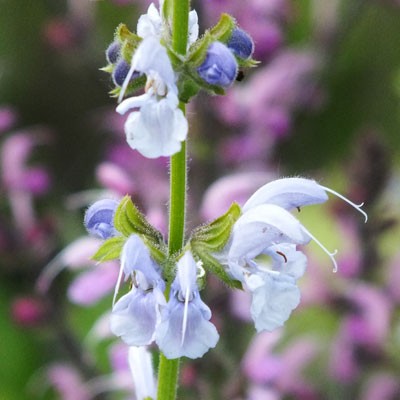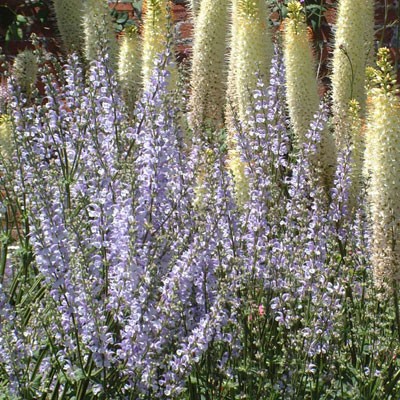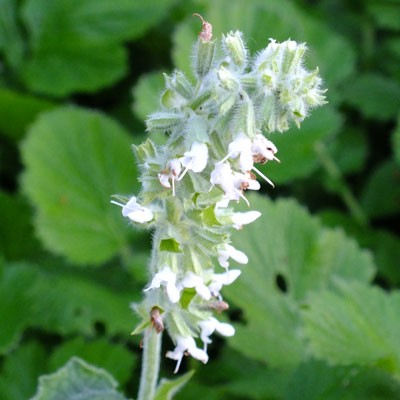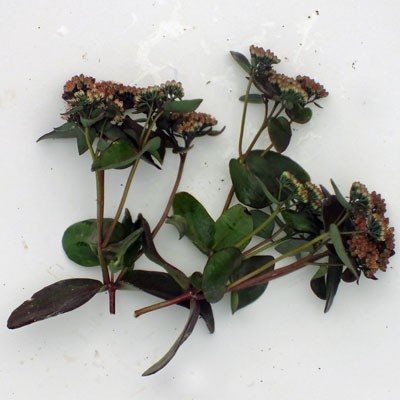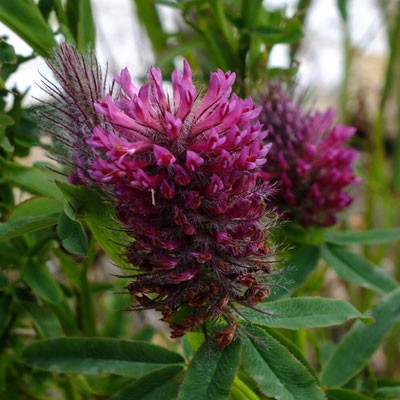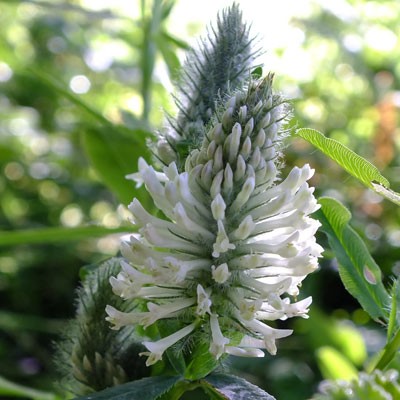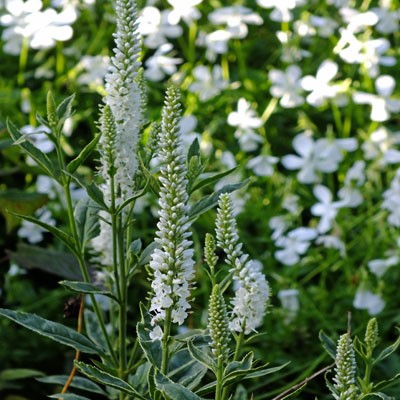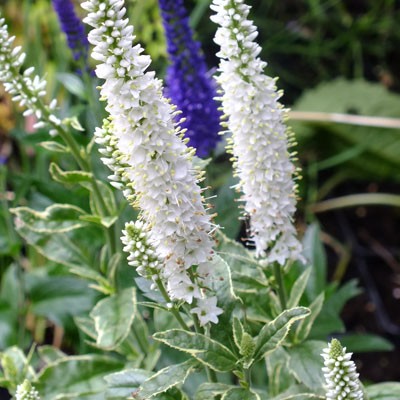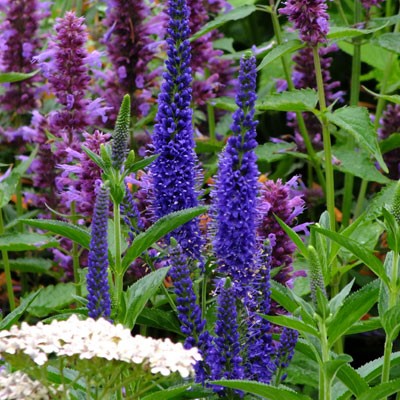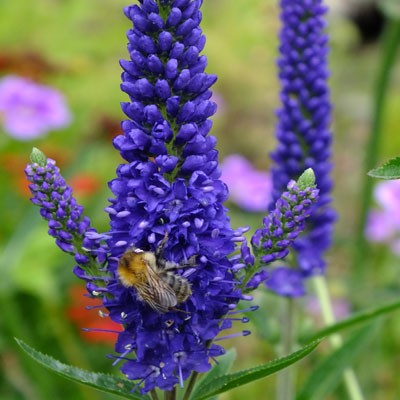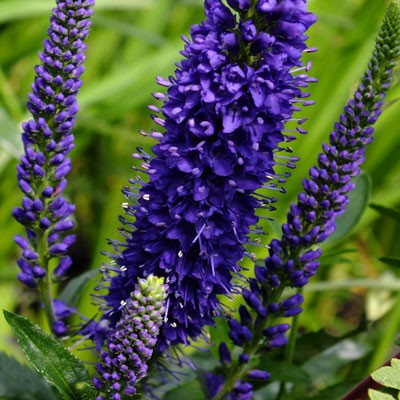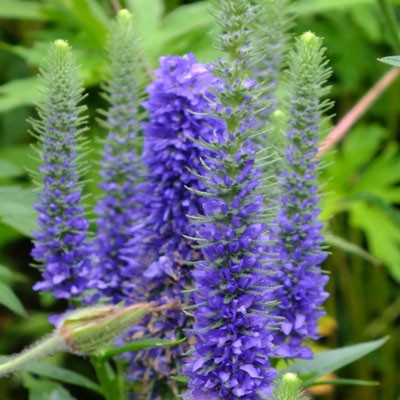
Bee Friendly
Potsize - 1L
Penstemon 'Sour Grapes' ('Stapleford Gem') is a larger, taller cultivar with strong upright flowering spikes of creamy white flowers, painted lilac and pink on the outside. 60cm, flowering throughout Summer.
This is a cultivar with a confused history. It is entirely possible that two similar cultivars were named 'Sour Grapes', one raised by Nellie Britten in the late 1930's and the other given to Marjery Fish in the 1950's. Further confusion comes from a similarity and mixed labelling in the trade with P.'Stapleford Gem'. I don't want to make any claims as to which ours is, I would just say that it is a strong grower of dense habit with distinctively dark, slightly hairy leaves which at some times of the year are markedly cross shaped in the way they grow on the stem. The flowers vary dependant on conditions but are a mix of lilac and blue shades and most lovely.
If there is a Penstemon expert out there who would like to help with identification, I'd welcome the input.
Cut back lightly in Autumn, harder in Spring
Links

